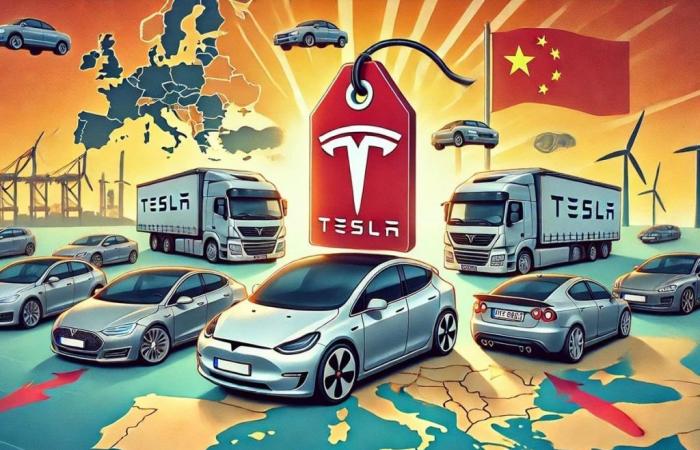European electric vehicle buyers face price cuts on their favorite models fly away in the coming months. A new tax on electric cars made in China has been introduced, and its impact on consumers is already starting to be felt. This measure aims to protect the European automobile industry while limiting dependence on Chinese imports, but it could well weigh heavily on the budgets of future buyers of electric cars.
Why this tax on Chinese electric cars?
The decision to impose a tax on vehicles imported from China is part of the European Union’s desire to rebalance the forces of the automobile market. While many brands like Tesla, Daciaet MG produce some of their electric models in China for cost reasons, this tax could slow down the appeal of these models on the European market. Cars manufactured in China have until now benefited from lower production costs, making it possible to offer competitive prices, but this new tax upsets this equation.
It’s the size of the RAV4, but it’s a little more powerful and 8,000 euros cheaper
Tesla, Dacia and MG: the big brands on the front line
Among the manufacturers most affected by this measure, we find well-known names: Teslawhich assembles part of its range in China, notably the very popular Tesla Model 3et Daciawhose model Dacia Spring is also produced in Chinese factories. MGa brand now resolutely focused on electricity, is also affected by this new regulation.
European consumers will have to expect a significant price increase on these vehicles. This increase could lead some buyers to reconsider their plans, particularly for those looking for an affordable electric vehicle. Manufacturers will therefore have to adjust their strategy and find solutions to compensate for this increase in costs, either by increasing sales prices or by reducing their profit margin.

How much more will you pay for an electric car made in China?
With the application of this new tax, price increases vary depending on the model. For example, for a vehicle like the Tesla Model 3which is currently one of the best-selling electric models in Europe, the price could rise by several thousand euros. Initial estimates indicate that consumers may have to pay between 3,000 and 5,000 additional eurosdepending on the model and its options.
Likewise, for the model Dacia Springrenowned for being one of the most affordable electric vehicles on the market, this tax could make its price much less attractive. The Dacia Spring could see its price increase by 20%which would directly impact its positioning as a low-cost electric car. This could deter some potential buyers looking for an economical vehicle for the city.
These two Japanese giants are joining forces for a new electric jewel that will shake up Europe!
Towards an uncertain future for affordable electric cars
This new tax does not only affect manufacturers, but also has consequences for the entire European electric car market. One of the European Union’s initial goals is to promote the mass adoption of electric vehicles in order to reduce CO₂ emissions. However, this tax risks slowing down this transition, by making certain models out of reach for consumers looking for affordable vehicles.
European manufacturers, such as Volkswagen or Renaultcould however benefit from it, because their locally manufactured vehicles will not be affected by this tax. They could thus strengthen their position on the European marketbut it also risks reduce choice for consumers who would turn to more expensive or less efficient models.
In response to this new tax, some manufacturers are already considering relocate their production outside China, or even to develop production lines directly in Europe. Such a strategy could ultimately mitigate the impacts of this tax, but it will take time and require significant investments.






